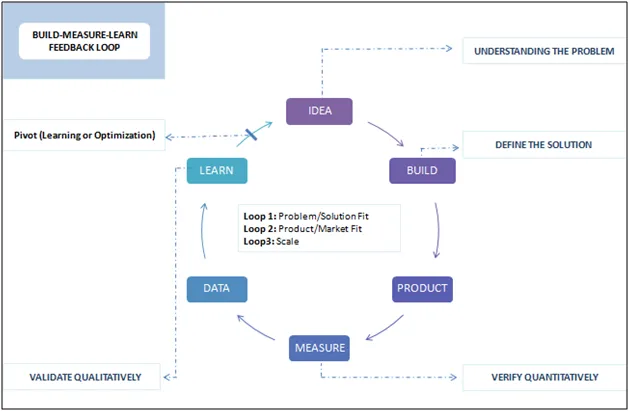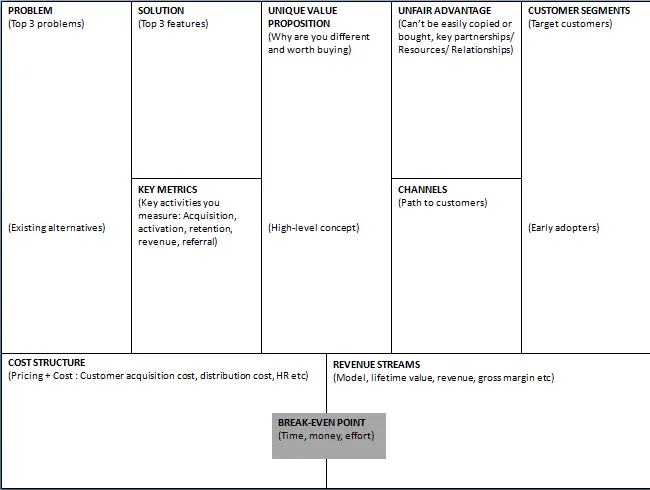Data is the queen to your king, the customer
The key is not to build quickly and fail but to prioritise data before intuition and then execute quickly.
As an early-stage startup, the product that you build should be in line with what your target customers require. You need to have a clear understanding of what the market desires. And the best way to validate your ideology is to learn from the customer themselves. As a mid or large-sized company, the decisions could be based on prior results or quantitative assumptions, but when you start from scratch, customer real-time data is your best bet. Large organisations too need to function as a lean startup while entering new markets, prioritising decisions that are data driven.

Let's take a real-time view to comprehend the thesis behind data.
To acquire and garner such data sets, Eric Ries, author of The Lean Startup, suggests that one needs to follow a Build-Measure-Learn Feedback loop as a methodology towards building a product that customers really want. The loop helps companies evaluate customer problems much faster, leading to quicker and more effective ways to optimise products or platforms.
Since each product development cycle is directly related to the revenue model, this methodology fits adequately to validate the business model as well. In the ideal scenario, executives follow a waterfall development approach that would “encourage” them to set the requirements straight up, design the product flow, start implementing, and selling to potential early adopters. But all this effort usually results in discovering that not many customers want the product. A better approach would be to learn from the customers directly.

Mark your market
Before a product is built, the most fundamental question that needs to be answered is what problem is one solving. Whether you follow Porter’s five force analysis or blue ocean strategy or generate a business model canvas, the answer will result in certain leap of faith assumptions that need to be validated with customer traction. It will be a challenge to get these assumptions right the first time due to the evolving nature of customers tackling their problems. The most essential learning will or rather should be to find out the type of market you are entering and its evolving pattern.
Once the problem assumptions are fixed, one needs to define the solution. The ideal approach to defining or implementing the set of solutions is to build a minimum viable product. Rather than an exhaustive feature list or offerings, start with the most critical pain area. The idea is to keep oneself lean so that quantification of the offerings could be done within relevant time duration and the team can build upon precise customer requirements. Your learning would directly be related to the traction the product receives across categories and offerings which need to optimised. A quantitative matrix that maps your efforts against numbers would be helpful in tracking such developments from customer end.
Implementing data to win
Once you have the numbers, the next step is to validate your learnings. One would definitely see a major difference between the leap of faith assumptions you initially started with and the present customer requirements. This is when you really get to know the customer requirements qualitatively, which will be a major step in re-defining the Problem/Solution fit. Your task now would be to re-align your efforts and teams towards a much more focused objective. How quickly you reach this stage and thereafter how fast you pivot your company as well as team would be the deal breaker to attain first-mover advantage and a top-of-mind recall.
As you interpret a higher share of the customer’s mind, the next cycle aimed towards product/market fit starts. This stage is preferred to start pitching your product/service to a greater audience and target bigger data sets. If your platform displays multi sided effects, pitching your product to respective clients is a must here. As you optimize the loop with a similar methodology, your product, which eventually grew with the help of early adopters, will garner greater audience. Decision makers have to take strong decisions during this phase as it will not only decide the company’s future trajectory but will also set the initial culture of vision and mission.
Scaling is the last loop that you would enter after attaining the product/market fit. How you sell and the size of your target market is going to determine the longevity or the hotness of your offerings. The focus towards innovation would be crucial in retaining your stance either as a market leader or as a player.
Mckinsey’s three horizons of growth model is what you can refer to practice dominance or even relevance. The key is not to build quickly and fail but to prioritise data before intuition and then execute quickly.
As you embark on the build-measure-learn feedback loop across the problem/solution, product/market and scaling phases, a clear visibility of transformation of your business model is imperative. Swiss business theorist and author Alexander Osterwalder, proposes a Business Model Canvas that functions as a great framework to picture and analyse your company growth.

As one exercises these methodologies in their daily operations, the scope of the product becomes coherent in the digital business ecosystem. One realises the value of data, customer development and feedback right from the elementary stage of customer development to company building. The need to innovate, expand, and/or branch out gets clearer with time as you access preeminent data sets and amass significant business cognisance around your market purview.
(Edited by Evelyn Ratnakumar)
(Disclaimer: The views and opinions expressed in this article are those of the author and do not necessarily reflect the views of YourStory.)








